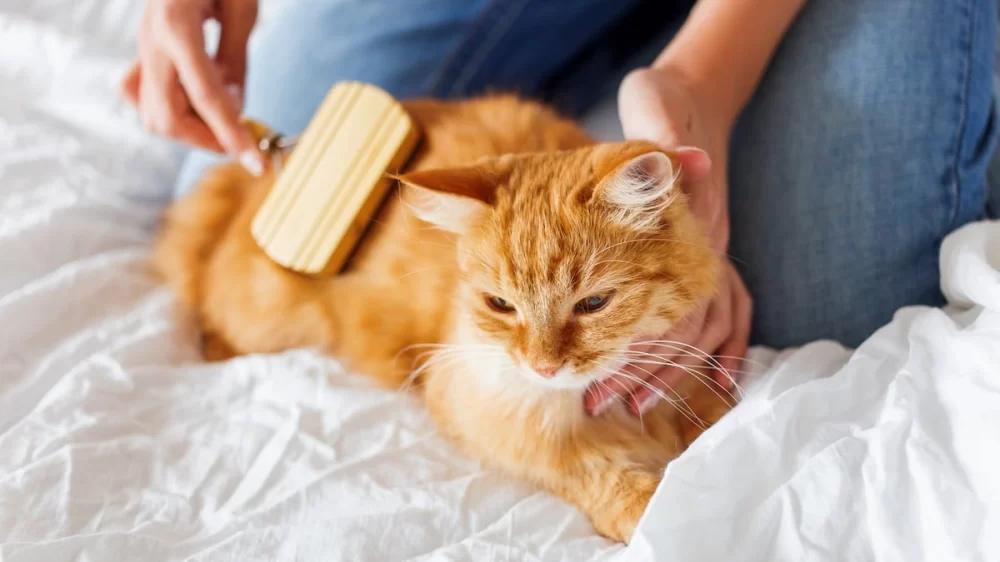- Preparing-to-groom-your-cat
- Choosing-the-right-grooming-tools
- Step-by-step-cat-grooming-process
- Handling-common-cat-grooming-challenges
- Benefits-of-regular-home-grooming
- Professional-services-and-products-to-consider
1. Preparing to Groom Your Cat
Grooming your cat at home is a wonderful way to bond and maintain your feline friend’s health, but it starts with proper preparation. First, choose a quiet, comfortable space where your cat feels safe and relaxed. This could be a favorite room or a spot with natural sunlight. Before you begin, make sure your cat’s nails are trimmed to reduce the risk of scratches during grooming. It’s also important to have patience—cats are sensitive to touch and sudden movements, so a calm and gentle approach helps tremendously.
For example, Sarah, a cat owner from Oregon, shared how she turned grooming into a fun ritual for her long-haired Maine Coon. By spending a few minutes each day talking softly and slowly brushing her cat, Sarah not only reduced matting but also strengthened their trust.
1.1 Understanding Your Cat’s Behavior
Every cat reacts differently to grooming. Observing your cat’s body language can guide how to proceed—if your cat purrs and relaxes, continue with gentle strokes. If your cat becomes restless or agitated, it may be best to pause and try again later. This respect for their mood helps turn grooming into a positive experience rather than a stressful chore.
1.2 Setting Realistic Grooming Sessions
Start with short grooming sessions of 5-10 minutes and gradually increase the time as your cat becomes more comfortable. This incremental approach helps both you and your cat build a routine without causing anxiety.
2. Choosing the Right Grooming Tools
Selecting appropriate grooming tools is critical for effective home cat care. Different fur types require specific tools, so understanding your cat’s coat is essential.
2.1 Brushes and Combs
For short-haired cats, a rubber brush or bristle brush can remove loose fur efficiently. Long-haired breeds benefit from a wide-toothed comb to detangle mats gently, followed by a slicker brush for smoothing. Investing in quality tools designed specifically for cats makes the grooming process smoother and more enjoyable for both parties.
2.2 Nail Clippers and Other Accessories
Nail clippers designed for cats help maintain paw health and prevent damage during play or grooming. Additionally, grooming gloves can provide a gentle way to remove loose fur while petting your cat, especially useful for sensitive felines.
2.3 Cleaning Supplies
Keep cotton balls, pet-safe wipes, and ear cleaning solutions handy. These are essential for comprehensive grooming that goes beyond fur care.
3. Step-by-Step Cat Grooming Process at Home
Following a structured grooming routine ensures thorough care and minimizes stress for your cat.
3.1 Brushing and Detangling
Begin by gently brushing your cat’s fur in the direction of hair growth. Pay special attention to common problem areas like behind the ears, under the legs, and around the neck. Use slow, steady strokes to avoid pulling tangles harshly.
3.2 Bathing (When Necessary)
While cats are known for self-cleaning, occasional baths can be beneficial, especially if your cat gets into something sticky or dirty. Use lukewarm water and a shampoo formulated specifically for cats. Bathing should be calm and brief, followed by thorough drying with a towel.
3.3 Nail Care
Trim nails carefully to avoid the quick, which can cause pain and bleeding. If you’re uncertain, a professional can guide you through the technique or provide this service.
3.4 Ear and Eye Cleaning
Use a damp cotton ball or pet-safe wipes to gently clean your cat’s ears and eyes. This prevents infections and keeps your cat comfortable.
4. Handling Common Cat Grooming Challenges
Grooming isn’t always straightforward—cats may resist or become anxious. Here are some practical strategies to overcome typical obstacles:
4.1 Dealing with Matting
Mats can be painful and damage the skin underneath. If your cat develops mats, try to work them out gently with a dematting comb or scissors designed for pet grooming. If mats are severe, it’s safer to consult a professional groomer.
4.2 Managing Stress and Fear
Use calming pheromone sprays or natural supplements to ease anxiety. Offering treats during and after grooming helps create positive associations.
4.3 When to Seek Professional Help
If your cat is extremely uncooperative or if you notice skin irritations, consulting a veterinarian or a professional groomer is highly recommended. Hidden Brook Veterinary offers expert advice and professional services tailored to your cat’s unique needs.
5. Benefits of Regular Home Grooming
Maintaining a consistent grooming routine not only keeps your cat’s coat shiny and clean but also helps you monitor your cat’s health closely. Early signs of skin issues, parasites, or unusual lumps can be detected sooner through regular grooming sessions.
Additionally, grooming reduces hairballs, decreases shedding around the house, and strengthens the bond between you and your cat. Many cat owners report that their pets become more affectionate and relaxed after establishing grooming as a routine.
6. Professional Services and Products to Consider
While home grooming covers most needs, professional services can complement your efforts. Groomers at Hidden Brook Veterinary provide specialized treatments such as deep cleaning, nail trimming, and deshedding that might be challenging to perform at home.
Moreover, Hidden Brook Veterinary offers a carefully curated selection of grooming products, including brushes, shampoos, and supplements, ensuring you have the best tools and supplies for your cat’s care.
Whether you’re a first-time cat owner or have years of experience, integrating professional support and high-quality products with home grooming creates the ideal care environment for your feline companion.












